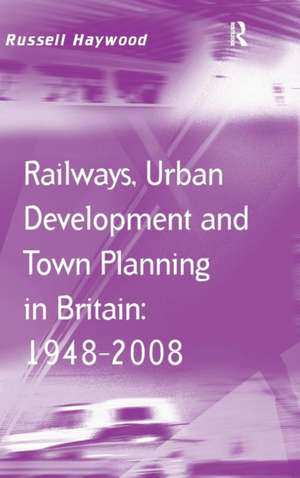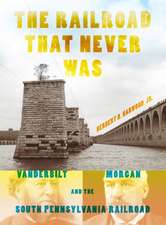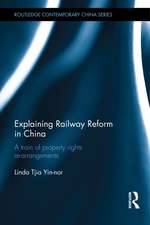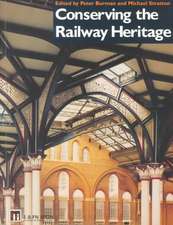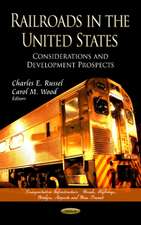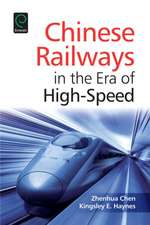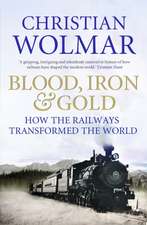Railways, Urban Development and Town Planning in Britain: 1948–2008
Autor Russell Haywooden Limba Engleză Hardback – 28 iul 2009
| Toate formatele și edițiile | Preț | Express |
|---|---|---|
| Paperback (1) | 489.26 lei 6-8 săpt. | |
| Taylor & Francis – 9 sep 2016 | 489.26 lei 6-8 săpt. | |
| Hardback (1) | 1065.65 lei 6-8 săpt. | |
| Taylor & Francis – 28 iul 2009 | 1065.65 lei 6-8 săpt. |
Preț: 1065.65 lei
Preț vechi: 1299.56 lei
-18% Nou
Puncte Express: 1598
Preț estimativ în valută:
203.98€ • 221.64$ • 171.45£
203.98€ • 221.64$ • 171.45£
Carte tipărită la comandă
Livrare economică 21 aprilie-05 mai
Preluare comenzi: 021 569.72.76
Specificații
ISBN-13: 9780754673927
ISBN-10: 0754673928
Pagini: 422
Ilustrații: includes 15 b&w illustrations & 14 line drawings
Dimensiuni: 156 x 234 x 24 mm
Greutate: 0.77 kg
Ediția:New ed.
Editura: Taylor & Francis
Colecția Routledge
Locul publicării:Oxford, United Kingdom
ISBN-10: 0754673928
Pagini: 422
Ilustrații: includes 15 b&w illustrations & 14 line drawings
Dimensiuni: 156 x 234 x 24 mm
Greutate: 0.77 kg
Ediția:New ed.
Editura: Taylor & Francis
Colecția Routledge
Locul publicării:Oxford, United Kingdom
Notă biografică
Professor Russell Haywood is a Professor of Transport Planning at Sheffield Hallam University, UK.
Recenzii
'The place of railways in British town planning can be summed up in two melancholy words: missed connection. Thankfully the Victorians left such a robust railway legacy that we still have the chance to do better in the twenty-first century. Russell Haywood's meticulous analysis of the past six decades is full of lessons for a more sustainable future.' Michael Hebbert, University of Manchester, UK 'The author's style is commendably lucid and easy to read, and the structure of his analysis extremely clear. The latter is further illuminated by a chapter devoted to a case study of the successes, failures and missed opportunities in one particular region: the city of Manchester. More might have been said about the location of new freight-generating manufacturing plants and distribution depots remote from rail access in the post-war years. Nevertheless this is an impressive thought-provoking (if expensive) study, which opens up a stimulating new perspective on the development of rail transport in Britain over the past eighty years.' Journal of Railway and Canal Historical Society
Cuprins
1: Introduction; 2: The Railway Network, Urban Development and Town Planning: 1830–1947; 3: Institutional Arrangements: 1948–68; 4: Policy: 1948–68; 5: Outcomes: 1948–68; 6: Institutional Relationships: 1969–94; 7: Policy: 1969–94; 8: Outcomes: 1969–94; 9: Case Study; 10: The Post-Privatisation Period 1994–2008; 11: The Post-Privatisation Period 1994–2008; 12: The Post-Privatisation Period 1994–2008: Outcomes; 13: Postscript
Descriere
This book provides a critical overview of the relationships between planning and railway management and development during the key period in the 20th Century when the railway was in public ownership: 1948-94.
